Mystery Cans!
This month I am doing something really different. I just came back from my annual New England dumping trip and brought back three "mystery cans," i.e., three cans so covered in rust that you can't identify them. SometimeS they clean up, sometimes they don't. Even when they do clean up they often turn out to be so common that they're not worth keeping. But occasionally, if you're lucky, you can find a real treasure.
I took photos of the three cans as I found them. I'll clean them, then post photos of how they turned out once they were cleaned. All three came from western Massachusetts.
BEFORE
Can #1
I found this can while scatter-dumping. "Scatter-dumping" is checking an area with a metal detector in the hopes of finding cans either in small bunches or individually. It's usually done in wooded areas with lots of old trees where cans might be buried in leaf mulch. It takes a lot of patience and a good metal detector, but it can pay off if you find a good spot. This can was between two rocks and a tree on a hillside near a pull off along an old road in some woods near a stream. FYI, I have a Gold Bug I, but have also had luck with a Fisher 1212X. |
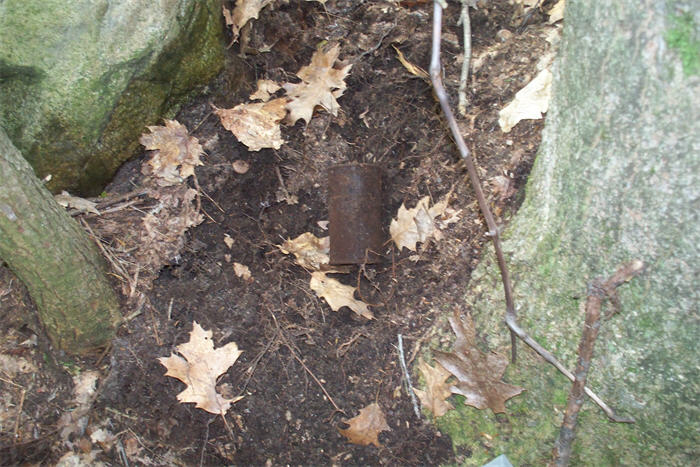 |
Can #2
| I dug can #2 in a large dump along a state highway about 30 miles from can #1. The dump may have been an old city dump, or a dump used by multiple families. It was large (maybe 50 feet long) and dated from the 1920s to the 1950s judging from the cans and bottles we found. This can was in a section where we were digging 1940s cans. | 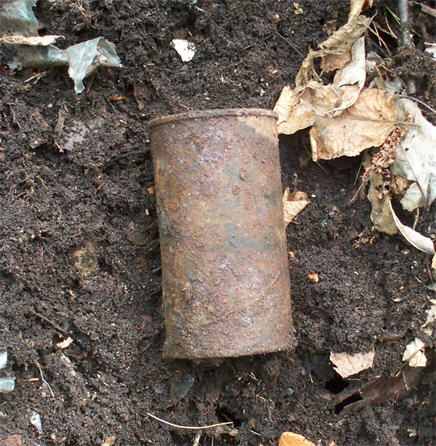 |
Can #3
| Can #3 is a quart I found about 20-30 feet from can #2 in the same dump. We dug it in an area where we were finding cans from just before World War II so I am hoping it's a good 1930s quart. It looks wet because we were caught in a rainstorm while digging. Note how it still has the cap on the spout. (The can at lower right was too rusted to take home to clean.) | 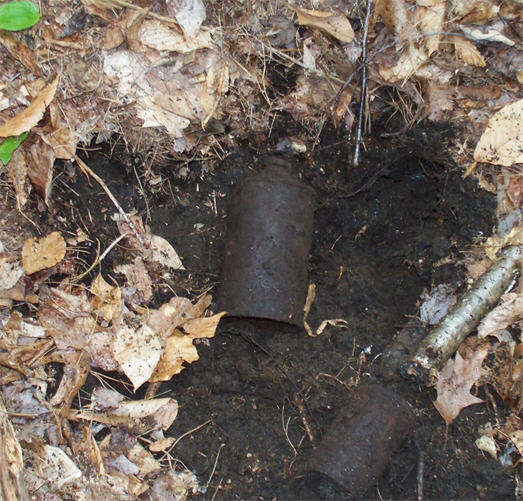 |
Here are the three cans together. After I took this photo I washed them and took the cap off of the quart (The cap crumbled so I won't clean it).
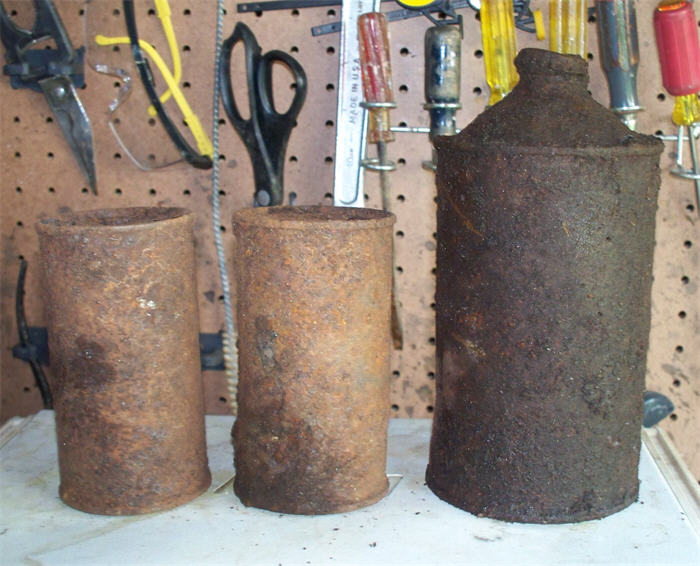 |
The Results
Can #1
| Here is can #1 after a day soaking in oxalic acid. It's a Fitzgerald Beer from Fitzgerald Brewing in Troy, New York. This can is from the 1950s. It's common enough that it isn't worth saving in this condition, alas. The rust came off one side of the can, but not the other. That's fairly common. | 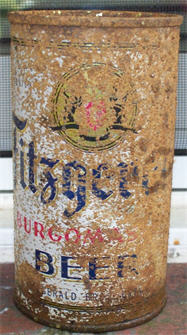 |
Can #2
Here is can #2 (on the left): OUCH! What the heck happened? It's a 1930s Wehle Colonial Ale from Wehle Brewing in West Haven, Connecticut. Unfortunately it was covered in tar when it was thrown away so it's ruined. The example on the right shows what the label is supposed to look like. I dug this second example in the same dump right after I dug the can on the left. The can on the right had some label showing so I knew what it was before I cleaned it. I include it here so you can see what the label looks like under all that tar! |
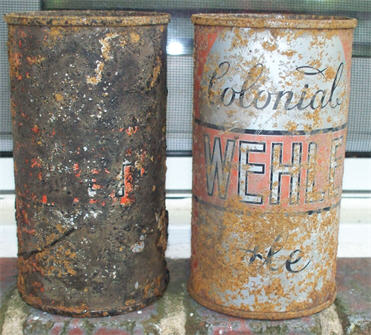 |
Can #3
| I had to soak this one for two days in oxalic acid. It's a Feigenspan XXX Amber Ale from Christian Feigenspan Brewing in Newark, New Jersey. The brewery was purchased by Ballantine in 1943 so this quart is from right before World War II. It's not a rare quart and I have a nice one already so I probably won't save it. | 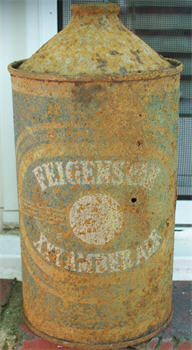 |
Mystery Cans
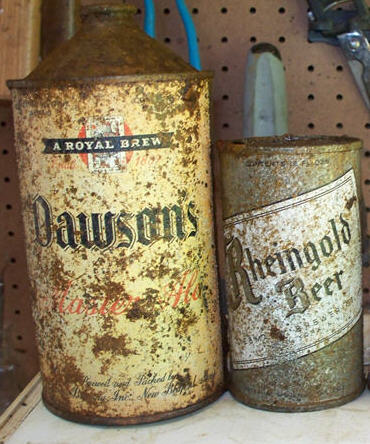 |
Well, I had hoped at least one of the three would turn out to be a gem. Oh well. Some mystery cans from the trip did turn out well. The two cans pictured here were also mystery cans, both cleaned reasonably well and both are well worth keeping. The Rheingold is the "Big 'R'" version and has a date code for 1937 on it. It's far less common than later Rheingolds and I haven't dumped one before. The Dawson's quart is also a good can to find. Not every dumper takes home mystery cans. I usually do if the dump is old enough. If all I am finding are common late 1950s-early 1960s cans I don't always bother. Pull tabs and other post 1960 cans were made of such thin metal that if they're rusted over they are usually ruined. In this case, however, we were digging cans from the 1930s and 1940s so it's worth grabbing every solid can you find. I use the "squeeze test." I give the can a gentle squeeze. If it crumbles, or a side caves in, then it's too rusted to clean. If it's still solid then it might clean up and I take it home. Fewer than 25% of mystery cans--maybe as little as 10%-- turn out to be worth keeping, but that small percentage worth keeping makes it worthwhile. |
